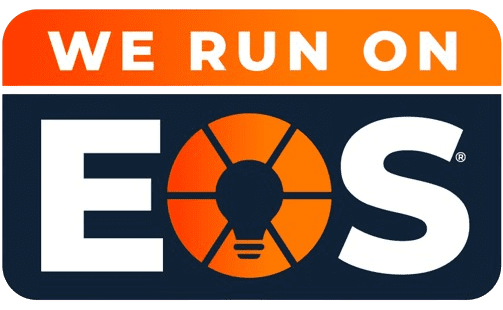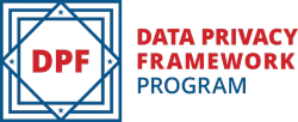Each year, The Omnia Group surveys leaders in small and mid-sized businesses across all industries to identify top talent trends and the strategies organizations are using to address them. Our current survey closes on December 31st, and we’re excited to publish the results in early 2023. If you haven’t already, please take a moment to share your experiences with us. It will take less than 10 minutes of your time.
Last year’s survey results highlighted the battle organizations were confronting attracting and retaining the right talent through trying times. All of us were facing the challenges of what will forever be known now as The Great Resignation. You can read about this in last year’s report.
Most of our respondents said they were shifting focus to internal mobility as a natural response, yet our findings showed that many lacked a formal process for the career development of their employees. In other words, most organizations were relying on informal or random processes or no process at all.
Internal mobility is the movement of employees within an organization, either vertically or laterally, for career transitions or career development. Offering employees the opportunity to change roles is beneficial to both the employee and the organization. According to a LinkedIn study, companies that excel at internal mobility retain employees an average of 5.4 years longer — nearly 2x as long as the average retention span of 2.9 years.
So how do you get started on formalizing your approach?
Let’s face it, in smaller organizations we all wear many hats and often lack organizational support and resources for formal learning and development programs. We’re lucky if we can get a new employee onboarding program to run consistently without flaws and even better if we can offer formal leadership development, sales, and customer service skills courses for our teams. Often, we’re outsourcing these programs to experts who wrote the latest trending book or promised the silver bullet to solve our workforce issues. But strategic career development and talent mobility really can’t be outsourced. It’s something each of us as leaders need to adapt based on the long-term growth strategies for our business and how our existing employees align (or don’t) with those plans.
Let’s begin with the growth plan. As a business leader heading into a new year, it’s the perfect time to not only be thinking about your immediate goals for 2023 but also your long-term vision for your company. This year, we adopted a new operating system based on the bestselling book, Traction, by Gino Wickman. We followed the tenets of the Enterprise Operating System to establish both a vision for the growth of our company as well as a discipline for setting and meeting more short-term goals and objectives. This process has really helped us develop more cohesion across our leadership team and methods to help us keep our focus. I highly recommend it.
Once you have your long-term vision crystallized and your shorter-term goals and objectives in place, it’s time to look at your talent. When we’re thinking about growth strategies, we often think we need to go outside to find new talent. The EOS process recommends starting from within. And there’s a business case for doing so. According to data from Josh Bersin, it can cost up to six times as much to hire externally rather than build talent from within an organization.
In addition, a study found that internal hires outperform external hires during the first two years of a promotion. So, the business case is clear. Let’s get started.
Here are some things to consider when developing an Internal Mobility and Employee Development Program.
Internal Mobility Opportunities Come in All Shapes and Sizes
First, don’t worry about making it overly formalized or getting stalled before you even get started by the idea that you must start promoting everyone. That’s costly and not necessary. There are many ways you can begin by considering the various types of internal transitions to make. These can include temporary job rotations, job shadowing opportunities, mentoring programs and offering cross-team project assignments.
Communicate Your Plans to Staff
When you make a commitment to focus on internal mobility it’s important to let the staff know. Help them understand how the process will work and what their role is. Career development is really a two-way street — the employee has accountability for taking charge of their future, and the organization should be there to support them. Make sure everyone knows what kind of opportunities are available, how to apply, and who to go to for questions. Keep everybody informed of activities and programs underway and highlighted successes.
Educate Managers
Many managers are reluctant to offer up talent to other functions, especially if they see this as a loss rather than a win. Involve your leaders in the strategy from the beginning and help them understand their role in fostering a transparent culture of growth and support. Managers who support their employees’ movement across functions or involvement in cross-team projects should be recognized and celebrated.
Get Data
The key to a successful internal mobility and employee development program begins with truly understanding your talent pool. We recommend using employee development assessments. Personality assessments provide powerful data into the unique traits, strengths, and motivational factors of every person on your team. When armed with this data, you can easily assess if you’ve got the right people in the right seats. You can also see who has the aptitude or possible motivation to do other roles in the company. For example, you may identify that you have customer service advisors with a high degree of assertiveness who could be developed into your next sales superstars. Or you may have someone with a knack for diving into and analyzing deep data who could help with future product development or marketing.
Get going!
Starting the path to creating a process for developing your talent and providing internal mobility doesn’t have to be daunting. These are some simple steps you can take to get moving. Omnia is here to help. Contact us anytime to get started with professional development reports for your team and how you can use that data to develop and retain your staff while achieving your business goals.























